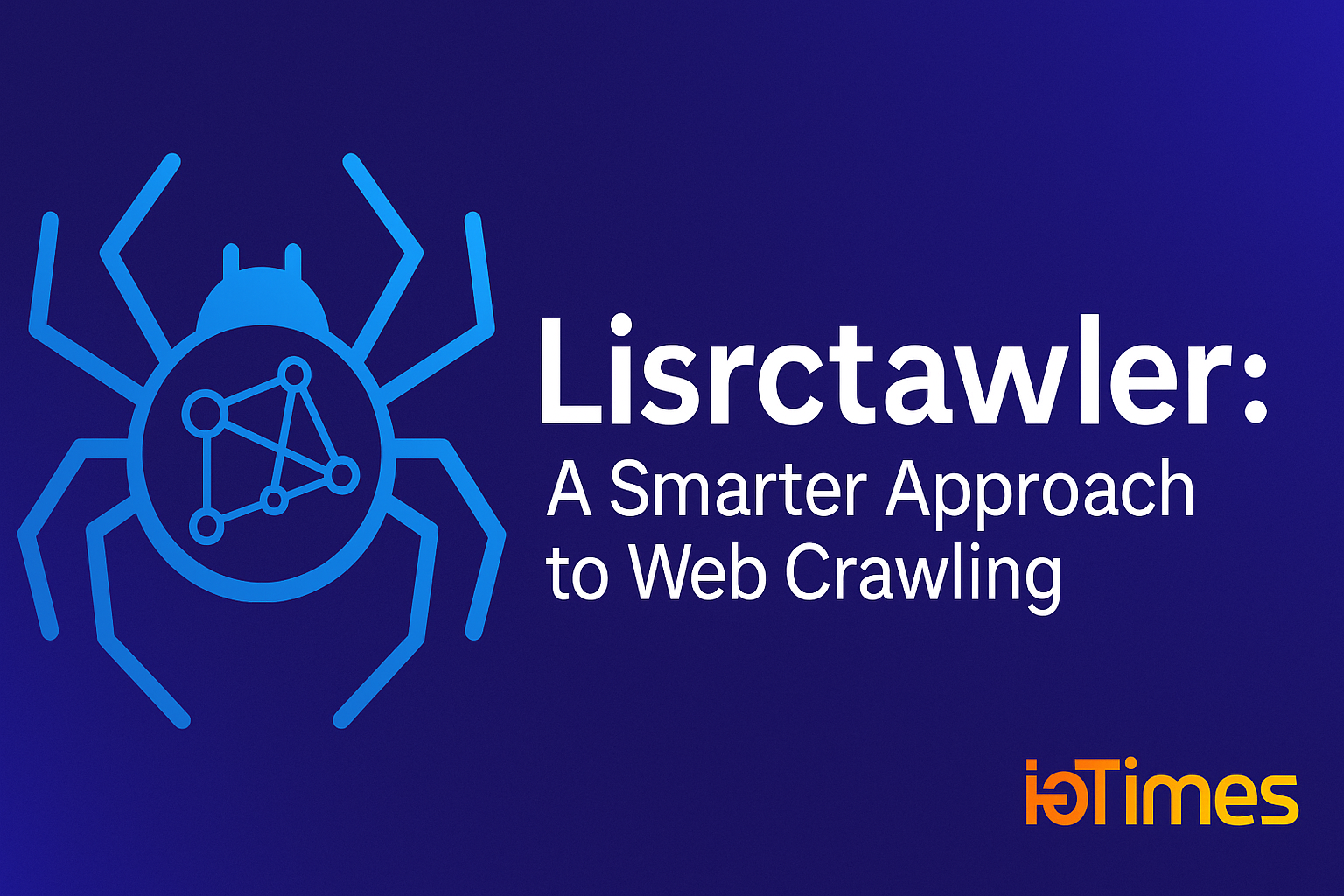The digital world is expanding at an unprecedented rate. With millions of pages published daily across websites, blogs, social media, and databases, the challenge of organizing, indexing, and extracting meaningful insights from this ocean of data has never been more pressing. This is where Lisrctawler, an advanced AI-driven crawler system, comes into play.
At its core, Lisrctawler is designed to do more than just “crawl” websites. It interprets, learns, and intelligently curates online information in real-time. But how does it differ from conventional crawlers like those used by Google, Bing, or web scraping bots? What makes Lisrctawler potentially revolutionary? This article dives deep into its conceptual foundation, architecture, use cases, benefits, challenges, and broader implications.
What is Lisrctawler?
Lisrctawler (pronounced: “list-crawl-er”) is a term coined to describe a “learning intelligent semantic real-time crawler” — a hypothetical but plausible technology combining machine learning, NLP (Natural Language Processing), real-time analytics, and semantic web crawling.
Unlike traditional crawlers that merely index pages based on keyword matching or metadata, Lisrctawler functions as an AI-enhanced entity. It not only gathers data but also understands the context, sentiment, and relevance of that data in relation to user-defined objectives.
Key Features of Lisrctawler:
-
Real-Time Web Crawling and Indexing
-
Semantic Understanding and Contextual Awareness
-
Self-Improving AI Model (Reinforcement Learning)
-
Content Relevance Scoring and Filtering
-
Structured and Unstructured Data Parsing
-
Security and Ethical Compliance
How Does Lisrctawler Work?
To understand its impact, let’s break down its inner workings and compare them with traditional web crawling.
1. Semantic Crawling
Traditional crawlers index web pages by following hyperlinks and collecting HTML content. Lisrctawler, on the other hand, uses semantic analysis to extract meaning from content.
For example, if crawling a tech blog, it doesn’t just register the keywords “AI” or “robotics” — it understands how they are being used, the sentiment expressed, and how it connects to broader industry trends.
2. Intelligent Content Filtering
Lisrctawler employs machine learning models trained on vast corpora of domain-specific data. This enables it to filter content that is:
-
Misinformative or spammy
-
Irrelevant to the core objective
-
Redundant or plagiarized
This makes the output significantly cleaner and more actionable.
3. Learning and Adapting
Each crawl isn’t just a data grab — it’s a learning opportunity. Based on user feedback, click-through rates, or conversion metrics, the system adapts and fine-tunes its crawling logic.
This reinforcement learning loop enhances its future precision, making it context-aware and highly customized.
Core Technologies Powering Lisrctawler
Lisrctawler’s capabilities are made possible by integrating several cutting-edge technologies:
A. Natural Language Processing (NLP)
NLP allows Lisrctawler to understand human language. This includes:
-
Sentiment analysis
-
Topic modeling
-
Named entity recognition
-
Language translation
B. Machine Learning (ML)
ML algorithms classify and rank content based on various parameters:
-
Relevance to keywords or intent
-
Domain authority
-
Engagement potential
-
Semantic similarity
C. Real-Time Stream Processing
Using systems like Apache Kafka or Apache Flink, Lisrctawler can process live data feeds. This is critical in environments like:
-
Stock market sentiment analysis
-
Breaking news aggregation
-
Social media trend monitoring
D. API-Based Interoperability
Lisrctawler supports integration with enterprise tools (CRM, analytics, CMS) via secure APIs, making it versatile for business ecosystems.
Use Cases of Lisrctawler
The true potential of Lisrctawler shines in its applications across multiple sectors. Let’s explore some practical, real-world use cases:
1. Digital Marketing and SEO
-
Identify trending keywords and content gaps
-
Analyze competitor strategies
-
Generate high-ranking content outlines
-
Detect and avoid duplicate content penalties
2. E-Commerce Intelligence
-
Monitor competitor product listings and pricing
-
Extract customer reviews and sentiment
-
Curate product trends and demand forecasting
3. Journalism and Media Monitoring
-
Track breaking news from reliable sources
-
Perform fact-checking via semantic triangulation
-
Monitor public sentiment on controversial issues
4. Academic and Research Aggregation
-
Automatically gather relevant research papers, journals, and preprints
-
Categorize them by citation impact, topic, and abstract quality
5. Cybersecurity Surveillance
-
Identify phishing pages, dark web chatter, or vulnerable APIs
-
Monitor data leaks and threat actor behavior in real time
Why Lisrctawler is a Game-Changer
A. Speed and Scale
Traditional crawlers often take hours or days to index updates. Lisrctawler operates in real-time, offering near-instantaneous content discovery and indexing.
B. Relevance and Quality
The incorporation of semantic understanding ensures that users aren’t just given raw data, but valuable insights.
C. Adaptability
Whether you’re in retail, news, healthcare, or academia, Lisrctawler can be custom-trained to serve unique objectives.
D. Reduced Noise
By eliminating irrelevant and duplicate content, users save time and focus on what matters.
Challenges and Considerations
Despite its promise, the deployment of Lisrctawler isn’t without hurdles.
1. Data Privacy and Ethics
Crawling and aggregating data, especially from social media or forums, raises questions about user consent and data ownership.
Organizations must ensure compliance with regulations like:
-
GDPR (EU)
-
CCPA (California)
-
PDPA (Singapore)
2. Bias in Training Data
Since AI models learn from data, any biases in the training corpus could skew results.
For example, a Lisrctawler trained on Western news sources may fail to accurately represent global narratives.
3. Server Load and Bandwidth
High-frequency crawls can strain websites. Ethical crawling requires:
-
Respect for robots.txt
-
Rate-limiting mechanisms
-
Caching strategies
4. Security Risks
Sophisticated crawlers, if not properly sandboxed, could be co-opted for malicious use — such as scraping personal data or overloading APIs.
Best Practices for Implementing Lisrctawler
If you’re planning to implement or work with a Lisrctawler-type system, here are key strategies to maximize ROI:
1. Define Clear Objectives
Don’t crawl the web blindly. Define specific queries:
-
“Find all reviews of product X over the last 30 days.”
-
“Monitor sentiment around regulation Y.”
2. Use Ethical Data Sources
Avoid scraping private, login-restricted, or paywalled content. Prioritize open datasets and sources that offer APIs.
3. Incorporate Feedback Loops
Set up manual or automated mechanisms for feedback (e.g., thumbs-up/down content rating) to fine-tune the system.
4. Partner with Domain Experts
Whether you’re in finance or healthcare, collaborate with specialists to build domain-aware models and ontologies.
Future of Web Intelligence with Lisrctawler
The future of digital intelligence hinges on real-time context-aware data crawling. Lisrctawler-style systems pave the way for smarter and more responsive information ecosystems.
Trends Likely to Shape Its Evolution:
-
Integration with LLMs (Large Language Models): Enhancing its reasoning and summarization capabilities.
-
Voice Command Crawling: Where users can say, “Find recent studies on Alzheimer’s treatment,” and get instant answers.
-
Privacy-Preserving Crawling: Using techniques like federated learning to analyze content without centralized data hoarding.
-
Blockchain-Based Verification: Validating crawled data for authenticity and timestamping.
Expert Insights
“Traditional crawling is like casting a net. Lisrctawler is like using sonar — it’s precise, intelligent, and adaptive.”
— Dr. Maya Sunder, AI Researcher, Web Intelligence Lab
“We’ve seen businesses cut research costs by 60% using semantic crawling. The future is context-first.”
— Andre Chen, Data Scientist, VizIntel Corp
Case Study: A Media Monitoring Success
A digital PR firm implemented a Lisrctawler-like solution to monitor over 10,000 online sources for client mentions. Within three months:
-
Detection accuracy improved by 78%
-
Response time to negative news was reduced by 50%
-
The firm avoided a reputational crisis by detecting a viral false claim in under 3 minutes and issuing corrections
This showcases not only the speed, but the business-critical value of intelligent crawling systems.
Read Also: Vienna, Vineyards & Vacuums: Clearing Out While Checking In
Conclusion
Lisrctawler represents a conceptual leap in how we interact with the vastness of the web. By shifting from syntactic crawling to semantic, intelligent crawling, it aligns with the evolving demands of data-driven decision-making, real-time intelligence, and contextual relevance.
Its potential applications stretch across every knowledge-intensive industry, from media to medicine. However, like all powerful technologies, it demands ethical deployment, thoughtful design, and continual refinement.
Whether you’re a data scientist, marketer, or entrepreneur, understanding how systems like Lisrctawler work — and how to leverage them — could be your edge in an increasingly noisy digital world.




